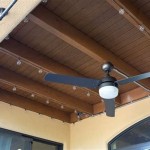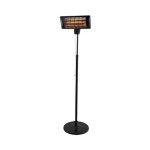Growing Polka Dot Plant Outdoors: A Guide to Success
The polka dot plant, scientifically known as Hypoestes phyllostachya, is a vibrant and eye-catching foliage plant that can add a touch of whimsy to your outdoor space. While it is commonly grown indoors, with proper care, you can enjoy its beauty outdoors as well. Here's a comprehensive guide to help you cultivate a thriving polka dot plant garden:Sunlight: Polka dot plants prefer bright, indirect sunlight. Too much direct sunlight can scorch its leaves, while too little light can cause leggy growth. Ideal locations include under the shade of trees or on patios with filtered sunlight.
Soil: Well-draining soil is essential for the health of polka dot plants. A mixture of peat moss, perlite, and loam provides good drainage and aeration. The pH of the soil should be slightly acidic, between 5.5 and 6.5.
Water: Polka dot plants require consistent watering, but allow the soil to dry out slightly between waterings. Overwatering can lead to root rot, while underwatering can cause wilting and leaf drop. Water deeply when the top inch of soil is dry to the touch.
Fertilizer: Fertilize polka dot plants every two to three weeks during the growing season. A balanced liquid fertilizer, diluted to half strength, is recommended. Avoid over-fertilizing, as this can burn the roots.
Pruning: Regular pruning helps maintain the shape of polka dot plants and encourages bushy growth. Pinch back the tips of stems to promote branching. You can also prune away any dead or damaged leaves.
Temperature: Polka dot plants are tropical plants that thrive in warm temperatures. The ideal temperature range is between 65 to 75°F (18 to 24°C). If temperatures drop below 55°F (13°C), the plant may go dormant.
Pest and Disease Control: Polka dot plants are generally pest-free and disease-resistant. However, they can be susceptible to aphids, mealybugs, and spider mites. Use insecticidal soap or neem oil to treat infestations. Avoid using harsh chemicals that can damage the leaves.
Overwintering: In areas with cold winters, polka dot plants must be brought indoors before the first frost. Keep them in a warm, well-lit room with temperatures above 60°F (16°C). Reduce watering during the winter months.
By following these tips, you can enjoy the vibrant beauty of polka dot plants in your outdoor space. With proper care, these charming plants will thrive and add a splash of color and interest to your garden.
Polka Dot Plant Growing Care Guide Garden Design

Polka Dot Plant Growing Care Guide Garden Design

Polka Dot Plant Growing Care Guide Garden Design

Plant At A Glance Proven Winners Polka Dot Hippo Rose Blooms

Explore Cornell Home Gardening Flower Growing Guides Guide

Pink Polka Dot Plant And Balcony Gardening Life Is A Garden

Polka Dot Plant Growing Care Guide Garden Design

Hippo Red Polka Dot Plant Hypoestes Phyllostachya G14157 In Augusta Manchester Lewiston Waterville Maine Me At Longfellow S Greenhouses

Three Dogs In A Garden Houseplant To Collect Polka Dot Plant

Polka Dot Plant How To Grow And Care With Success
Related Posts








